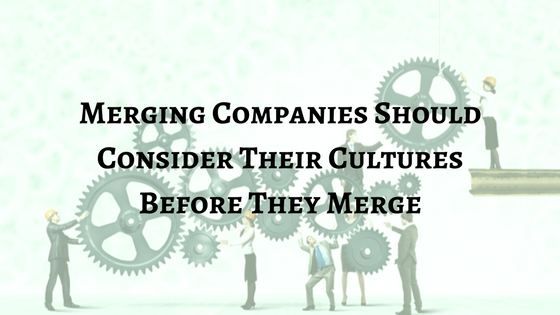
I have known and done plenty of business with a leading, highly diversified NJ based insurance agency for decades.
Less than a year ago one of main owners of the agency called with the exciting news that they were merging their firm with another, slightly larger NJ based insurance agency. The appeals of the merger were primarily that the two agency had complimentary insurance products that they were selling to different target clients and it seemed there would be economies of scale to drive combined earnings higher.
Today I met with one of the largest producers with the insurance agency with which I have been working. When I asked how the merger was going I was told the two firms were “de-merging.” When I probed the answer I got was that the two cultures were just too dissimilar. The agency I knew well had always prided itself on:
- growing profitable revenues by providing great service and launching innovative new products
- staying on the cutting edge of new technologies to support their focus on customer service
- having an open door, hands-on management style and treating their people well with the result they had little voluntary turn-over.
The agency they merged with:
- focused on cost reduction and containment vs. profitable revenue growth
- had a dictator style of leadership resulting in high turnover
- had outdated systems that they refused to change post-merger
- had a group of dysfunctional owners, some of whom viewed the merger as their opportunity to get bought out near term.
The de-merging process the two agencies are going through is not a happy friendly one, obviously. Plus, now both firms have to go back to their clients and explain what I think will be a messy divorce.
 There is not any win-win in this situation.
There is not any win-win in this situation.
PeopleProductive’s culture assessment and enhancing platform would have been an ideal resource for these two agencies to use well before they decided to merge.
Using PeopleProductive’s software tools would have shown clearly the differences between the two organization’s cultures including the:
- differences in leadership styles
- relationships among the people in each firm
- engagement of people in each firm with their organization’s mission and values
- over-all vibe and tone of the two organizations. Apparently since the two organizations were told of the de-merger the old energy and sense of urgency in the agency I have known has come back. The merger was killing it.
- innovation and creative thinking that was driving the one agency and was absent in the other.
Management would have had the information they needed to make a well-considered decision whether or not this proposed merger would really work.
Jack Killion
